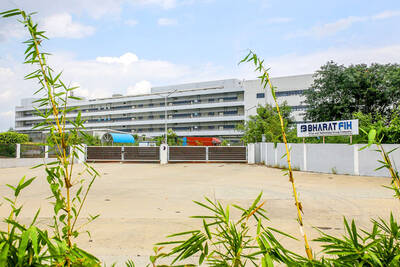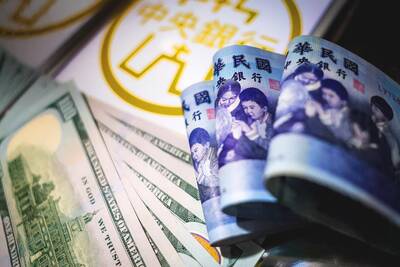The average Taiwanese holds 3.3 insurance policies, the highest in the world, followed by Chinese with three policies, Vietnamese and Indians with 2.7 policies, South Koreans with 2.3 policies and Japanese with 1.8 policies, a survey released yesterday by BNP Paribas Cardif showed.
Despite holding the most insurance products per person in the world, only 67 percent of Taiwanese said they feel well-protected in the event of unforeseen accidents, lower than the Asian average of 72 percent, including 90 percent for Vietnamese and Indians, and 72 percent for Chinese, the survey showed.
While about 72 percent of global respondents worry the most about losing their job and income, Taiwanese respondents are mainly concerned about chronic diseases, followed by major accidents and catastrophic illness, it showed.
BNP Paribas Cardif polled 26,000 people in 26 markets on three continents to assess their need for personal insurance coverage and analyze their behaviors.
“Their fear of chronic diseases may be related to the fact that Taiwan is becoming an aged society, with more people over 65 years old,” BNP Paribas Cardif told a media briefing in Taipei.
That might also explain why most Taiwanese respondents said they want to have better protection to alleviate costly medical expenses caused by hospitalization, major diseases and permanent disability.
Most Taiwanese respondents were satisfied with the nation’s public health insurance program, personal safety and education system, while they were most unhappy with their jobs, financial planning for retirement and business environment for start-ups, the survey found.
“We already know that local consumers love purchasing insurance products, but it is surprising to know that they do not feel protected enough,” BNP Paribas Cardif chief executive officer for Asia See See Ooi (黃金喜葹) said.
“It looks natural to me. The more insurance policies people buy, the more clearly they get to know the potential risks in their lives. In other words, people holding more policies tend to have higher risk awareness,” National Chengchi University department of risk management and insurance professor Peng Jin-lung (彭金隆) told the news conference.

SETBACK: Apple’s India iPhone push has been disrupted after Foxconn recalled hundreds of Chinese engineers, amid Beijing’s attempts to curb tech transfers Apple Inc assembly partner Hon Hai Precision Industry Co (鴻海精密), also known internationally as Foxconn Technology Group (富士康科技集團), has recalled about 300 Chinese engineers from a factory in India, the latest setback for the iPhone maker’s push to rapidly expand in the country. The extraction of Chinese workers from the factory of Yuzhan Technology (India) Private Ltd, a Hon Hai component unit, in southern Tamil Nadu state, is the second such move in a few months. The company has started flying in Taiwanese engineers to replace staff leaving, people familiar with the matter said, asking not to be named, as the

The prices of gasoline and diesel at domestic fuel stations are to rise NT$0.1 and NT$0.4 per liter this week respectively, after international crude oil prices rose last week, CPC Corp, Taiwan (台灣中油) and Formosa Petrochemical Corp (台塑石化) announced yesterday. Effective today, gasoline prices at CPC and Formosa stations are to rise to NT$27.3, NT$28.8 and NT$30.8 per liter for 92, 95 and 98-octane unleaded gasoline respectively, the companies said in separate statements. The price of premium diesel is to rise to NT$26.2 per liter at CPC stations and NT$26 at Formosa pumps, they said. The announcements came after international crude oil prices

DOLLAR SIGNS: The central bank rejected claims that the NT dollar had appreciated 10 percentage points more than the yen or the won against the greenback The New Taiwan dollar yesterday fell for a sixth day to its weakest level in three months, driven by equity-related outflows and reactions to an economics official’s exchange rate remarks. The NT dollar slid NT$0.197, or 0.65 percent, to close at NT$30.505 per US dollar, central bank data showed. The local currency has depreciated 1.97 percent so far this month, ranking as the weakest performer among Asian currencies. Dealers attributed the retreat to foreign investors wiring capital gains and dividends abroad after taking profit in local shares. They also pointed to reports that Washington might consider taking equity stakes in chipmakers, including Taiwan Semiconductor

A German company is putting used electric vehicle batteries to new use by stacking them into fridge-size units that homes and businesses can use to store their excess solar and wind energy. This week, the company Voltfang — which means “catching volts” — opened its first industrial site in Aachen, Germany, near the Belgian and Dutch borders. With about 100 staff, Voltfang says it is the biggest facility of its kind in Europe in the budding sector of refurbishing lithium-ion batteries. Its CEO David Oudsandji hopes it would help Europe’s biggest economy ween itself off fossil fuels and increasingly rely on climate-friendly renewables. While